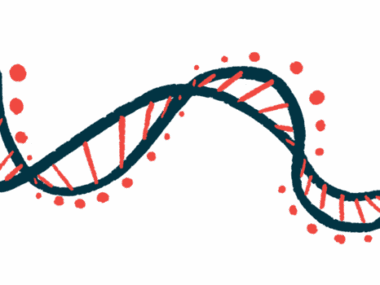Study identifies 28 gene mutations linked with sarcoidosis risk
Higher genetically predicted BMI, inflammatory protein levels also associated
Written by |

More than two dozen mutations that seem to increase the risk of developing sarcoidosis were identified in a new study.
Notably, 17 of the 28 mutations hadn’t been linked to the inflammatory disease.
Higher genetically predicted body mass index (BMI) and higher levels of several proteins involved in inflammation are also significantly linked to a higher sarcoidosis risk. BMI is a ratio of height and weight that’s used as proxy of body fat. The study, “GWAS identifies genetic loci, lifestyle factors and circulating biomarkers that are risk factors for sarcoidosis,” was published in Nature Communications.
Sarcoidosis is an inflammatory disorder marked by abnormal clumps of immune cells called granulomas. The causes of sarcoidosis aren’t fully understood, but the disease often runs in families, which suggests genetics likely play a role.
Scientists have had limited success identifying specific mutations associated with sarcoidosis risk, leading an international team of researchers to conduct a genome-wide association study (GWAS) meta-analysis. GWAS involves looking at all the genetic variants present in a large group of people with and without a given disease. If some variants are significantly more common among the people with the disease, it suggests they may predispose them toward developing it.
Gene mutations and sarcoidosis risk
The meta-analysis was based on data from four large-scale studies that included 9,755 people with sarcoidosis and more than 1.5 million without it. About three-quarters of the sarcoidosis patients were of European descent, while the rest were African Americans.
Results showed 28 different mutations were significantly linked with a higher sarcoidosis risk. Eleven mutations have been previously linked to the disease, but the remaining 17 hadn’t. When restricted by ancestry, there were 24 sarcoidosis-associated mutations among patients with European ancestry and three mutations for African-Americans.
“Gene prioritization revealed the largest effect size of the lead variant near C1orf141-LR23R gene and the high potential deleterious impact of the lead variants near CCDC88 and TYK2 genes, suggesting a substantial impact of these genes on disease susceptibility,” wrote the researchers, who noted that many of the identified genes play roles in coordinating inflammation, which makes sense given that sarcoidosis is marked by dysregulated inflammation.
Still, the researchers emphasized that GWAS can only identify associations and more studies are needed to explore what role these mutations may play in developing sarcoidosis.
After the GWAS, the researchers conducted a Mendelian randomization (MR), an analysis that uses genetic information to identify potential cause and effect relationships between an exposure — in this case, modifiable factors, inflammatory markers, and circulating proteins — and an outcome, that is, developing sarcoidosis. If people who carry more variants associated with any of these traits have sarcoidosis then it can be inferred that the traits themselves may affect disease risk.
The researchers looked at genetic markers linked to two measures of body fat, BMI and waist-to-hip ratio, and four lifestyle factors — starting smoking, alcohol and coffee consumption, and moderate to vigorous physical activity.
The MR results suggested that higher genetically predicted BMI was significantly associated with a higher risk of sarcoidosis. Previous research had suggested a link between obesity and sarcoidosis risk, and the current data “reinforce the notion that excessive body weight may escalate sarcoidosis risk,” wrote the researchers. who said their MR analysis was based mainly on GWAS data from people of European descent, so the results may not apply in other populations.
Further MR analyses showed that the levels of the inflammatory marker interleukin-23 receptor and eight circulating proteins, many also involved in inflammation, were significantly associated with sarcoidosis risk.
These inflammatory markers might be useful as targets for treating sarcoidosis treatment, said the researchers said, who emphasized that further studies will be necessary.






